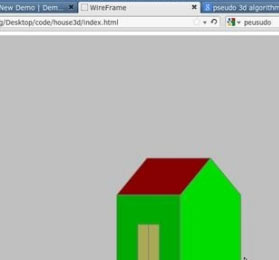SOAP协议规范(二)_.NET教程_编程技术
以下是描述上面结构的schema片断:
<element name="book" type="tns:book"/>
<complexType name="Book">
<!-- Either the following group must occur or else the
href attribute must appear, but not both. -->
<sequence minOccurs="0" maxOccurs="1">
<element name="title" type="xsd:string"/>
<element name="firstauthor" type="tns:Person"/>
<element name="secondauthor" type="tns:Person"/>
</sequence>
<attribute name="href" type="uriReference"/>
<attribute name="id" type="ID"/>
<anyAttribute namespace="##other"/>
</complexType>
<element name="Person" base="tns:Person"/>
<complexType name="Person">
<!-- Either the following group must occur or else the
href attribute must appear, but not both. -->
<sequence minOccurs="0" maxOccurs="1">
<element name="name" type="xsd:string"/>
<element name="address" type="tns:Address"/>
</sequence>
<attribute name="href" type="uriReference"/>
<attribute name="id" type="ID"/>
<anyAttribute namespace="##other"/>
</complexType>
<element name="Address" base="tns:Address"/>
<complexType name="Address">
<!-- Either the following group must occur or else the
href attribute must appear, but not both. -->
<sequence minOccurs="0" maxOccurs="1">
<element name="street" type="xsd:string"/>
<element name="city" type="xsd:string"/>
<element name="state" type="xsd:string"/>
</sequence>
<attribute name="href" type="uriReference"/>
<attribute name="id" type="ID"/>
<anyAttribute namespace="##other"/>
</complexType>
5.4.2 数组
SOAP数组定义为具有"SOAP-ENC:Array"类型或一个从"SOAP-ENC:Array"衍生的类型(参见规则8)。数组表示为元素值,对元素的名没有特别的约束(正如元素值并不约束它们所属的元素)。数组可以包含任意类型的元素,包括嵌套数组。可以创建新的类型(受SOAP-ENC:Array
类型限制)来表示数组,如整数数组或某些用户定义的枚举。数组值表示为组成这个数组的项的元素的规则序列。在数组值中,元素名对于区分accesor并不重要。元素可以有任意的名。实际上,元素常常用它们在schema中暗示或确定的数组类型来命名元素。并且一般情况下对于复合值来说,如果数组中数组项的值是single-reference值,则这个数组项包含它的值,否则,该数组项通过"href"属性引用这个值。下面的例子是一个整型数组的schema片断:
<element name="myfavoritenumbers"
type="SOAP-ENC:Array"/>
<myFavoriteNumbers
SOAP-ENC:arrayType="xsd:int[2]">
<number>3</number>
<number>4</number>
</myFavoriteNumbers>
在这个例子中,数组"myfavoritenumbers"包括几个成员,每个成员是一个类型为soap-enc:int的值。注意soap-enc:array允许不受限制的元素名,它们不传达任何类型信息,所以在使用时,或者它们有xsi:type属性,或者它们所属的元素有soap-enc:arraytype属性。自然,由soap-enc:array衍生的类型可以声明局部元素,但这种情况下要包括类型信息。上面已经提到,soap-enc schema包含了元素的声明,元素名与"xml schema part 2: datatypes"规范[11]中的简单类型一致。其中包括了对"array"的声明。于是,我们可以这样写:
<soap-enc:array soap-enc:arraytype="xsd:int[2]">
<SOAP-ENC:int>3</SOAP-ENC:int>
<SOAP-ENC:int>4</SOAP-ENC:int>
</SOAP-ENC:Array>
数组可以包含特定arraytype的任意子类型的实例。即,数组成员可以是arrytype属性值指定的类型的任意子类型,这个类型对于arraytype属性中指定的类型来说是可替换的(根据schema中的替换规则)。例如,一个整型数组可以包含从整型衍生的任意类型(如"int"或任意用户定义的从整型衍生的类型)。同样,一个"address"数组可能包含一个address的受限类型或扩展类型如"internationaladdress"。因为提供的soap-enc:array类型允许任意类型的成员,所以可以包含任意类型的混合除非使用arraytype属性加以特别的限制。在实例中,可以使用xsi:type指定成员元素的类型,或通过schema中成员元素的声明来指定。下面是两个例子。
<soap-enc:array soap-enc:arraytype="soap-enc:ur-type[4]">
<thing xsi:type="xsd:int">12345</thing>
<thing xsi:type="xsd:decimal">6.789</thing>
<thing xsi:type="xsd:string">
Of Mans First Disobedience, and the Fruit
Of that Forbidden Tree, whose mortal tast
Brought Death into the World, and all our woe,
</thing>
<thing xsi:type="xsd:uriReference">
</SOAP-ENC:Array>
<SOAP-ENC:Array SOAP-ENC:arrayType="SOAP-ENC:ur-type[4]">
<SOAP-ENC:int>12345</SOAP-ENC:int>
<SOAP-ENC:decimal>6.789</SOAP-ENC:decimal>
<xsd:string>
Of Mans First Disobedience, and the Fruit
Of that Forbidden Tree, whose mortal tast
Brought Death into the World, and all our woe,
</xsd:string>
<SOAP-ENC:uriReference>
</SOAP-ENC:Array>
数组值可以是结构或其它复合值。例如"xyz:order"结构数组:
<soap-enc:array soap-enc:arraytype="xyz:order[2]">
<Order>
<Product>Apple</Product>
<Price>1.56</Price>
</Order>
<Order>
<Product>Peach</Product>
<Price>1.48</Price>
</Order>
</SOAP-ENC:Array>
数组成员值也可以是数组。下例是两个字符串数组组成的数组:
<soap-enc:array soap-enc:arraytype="xsd:string[][2]">
<item href="#array-1"/>
<item href="#array-2"/>
</SOAP-ENC:Array>
<SOAP-ENC:Array id="array-1" SOAP-ENC:arrayType="xsd:string[2]">
<item>r1c1</item>
<item>r1c2</item>
<item>r1c3</item>
</SOAP-ENC:Array>
<SOAP-ENC:Array id="array-2" SOAP-ENC:arrayType="xsd:string[2]">
<item>r2c1</item>
<item>r2c2</item>
</SOAP-ENC:Array>
包含数组的元素无需命名为"soap-enc:array"。它可以有任意的名,只要元素的类型是soap-enc:array或由之衍生的类型。例如,下面是一个schema片断和与之一致的数组实例。
<simpletype name="phonenumber" base="string"/>
<element name="ArrayOfPhoneNumbers">
<complexType base="SOAP-ENC:Array">
<element name="phoneNumber" type="tns:phoneNumber" maxOccurs="unbounded" />
</complexType>
<anyAttribute/>
</element>
<xyz:ArrayOfPhoneNumbers SOAP-ENC:arrayType="xyz:phoneNumber[2]">
<phoneNumber>206-555-1212</phoneNumber>
<phoneNumber>1-888-123-4567</phoneNumber>
</xyz:ArrayOfPhoneNumbers>
数组可能是多维的。在这种情况下,在arraytype属性的asize部分将不止有一个值:
<soap-enc:array soap-enc:arraytype="xsd:string[2,3]">
<item>r1c1</item>
<item>r1c2</item>
<item>r1c3</item>
<item>r2c1</item>
<item>r2c2</item>
<item>r2c3</item>
</SOAP-ENC:Array>
虽然上面的例子把数组编码为独立的元素,但元素值也可以是嵌入形式,而且若元素值是single reference时,必须编码为嵌入形式。下例是一个schema片断,电话号码数组嵌入到一个类型为"person"的结构中,并且通过accessor "phone-numbers"访问它:
<simpletype name="phonenumber" base="string"/>
<element name="ArrayOfPhoneNumbers">
<complexType base="SOAP-ENC:Array">
<element name="phoneNumber" type="tns:phoneNumber" maxOccurs="unbounded"/>
</complexType>
<anyAttribute/>
</element>
<element name="Person">
<complexType>
<element name="name" type="string"/>
<element name="phoneNumbers" type="tns:ArrayOfPhoneNumbers"/>
</complexType>
</element>
<xyz:Person>
<name>John Hancock</name>
<phoneNumbers SOAP-ENC:arrayType="xyz:phoneNumber[2]">
<phoneNumber>206-555-1212</phoneNumber>
<phoneNumber>1-888-123-4567</phoneNumber>
</phoneNumbers>
</xyz:Person>
下面的例子中,数组值为single-reference,被编码为嵌入元素,包含它的元素名即为入口名:
<xyz:purchaseorder>
<CustomerName>Henry Ford</CustomerName>
<ShipTo>
<Street>5th Ave</Street>
<City>New York</City>
<State>NY</State>
<Zip>10010</Zip>
</ShipTo>
<PurchaseLineItems SOAP-ENC:arrayType="Order[2]">
<Order>
<Product>Apple</Product>
<Price>1.56</Price>
</Order>
<Order>
<Product>Peach</Product>
<Price>1.48</Price>
</Order>
</PurchaseLineItems>
</xyz:PurchaseOrder>
5.4.2.1 部分储值(partially transmitted)数组
SOAP提供了对部分储值(partially transmitted)数组的支持,如某些上下文中的可变数组。一个partially transmitted 数组由一个"SOAP-ENC:offset"属性(从第一个transmitted的元素开始的偏移量,基于0)指示。如果省略,偏移量取0。下面的例子中数组的大小为5,但只有从0起,第三和第四个元素被储值。
<soap-enc:array ;soap-enc:arraytype="xsd:string[5]" ;soap-enc:offset="[2]">
<item>The third element</item>
<item>The fourth element</item>
</SOAP-ENC:Array>
5.4.2.2 稀疏数组sparse arrays
SOAP提供了对稀疏数组的支持。每个表示成员值的元素包含一个"SOAP-ENC:position"属性,用来指示它在数组中的位置。下例是两维字符串稀疏数组的例子,数组大小是4,但只用到第2个。
<soap-enc:array soap-enc:arraytype="xsd:string[,][4]">
<SOAP-ENC:Array href="#array-1" SOAP-ENC:position="[2]"/>
</SOAP-ENC:Array>
<SOAP-ENC:Array id="array-1" SOAP-ENC:arrayType="xsd:string[10,10]">
<item SOAP-ENC:position="[2,2]">Third row, third col</item>
<item SOAP-ENC:position="[7,2]">Eighth row, third col</item>
</SOAP-ENC:Array>
如果对array-1的引用仅发生在数组内部,上例也可以编码如下:
<soap-enc:array soap-enc:arraytype="xsd:string[,][4]">
<SOAP-ENC:Array SOAP-ENC:position="[2]" SOAP-ENC:arrayType="xsd:string[10, 10]>
<item SOAP-ENC:position="[2,2]">Third row, third col</item>
<item SOAP-ENC:position="[7,2]">Eighth row, third col</item>
</SOAP-ENC:Array>
</SOAP-ENC:Array>
5.4.3 一般复合类型
在这里提到的编码规则不仅仅限于accessor名已知的情况,如果accessor名是运行环境下实时获得的,编码规则同样适用,也就是说accessor编码成一个元素名与accessor名匹配的元素,同时accessor可能包含或者引用该元素的值。如果accessor包含类型不能事先确定的值,它必须包含一个合适的属性xsi:type 。类似地,上述引用的规则已经足够用于复合类型的序列化,这些复合类型可能包含用名区分的accessors(结构)和用名及序数位置区分的accessors。(可能包含重复的accessor) 实际上这并不要求任何schema模式包含这些类型,但更为准确的说法是:一个类型模型(type-model)schema如果有这些类型,就可以构造一个符合XML句法规则的schema和XML文档实例。
<xyz:purchaseorder>
<CustomerName>Henry Ford</CustomerName>
<ShipTo>
<Street>5th Ave</Street>
<City>New York</City>
<State>NY</State>
<Zip>10010</Zip>
</ShipTo>
<PurchaseLineItems>
<Order>
<Product>Apple</Product>
<Price>1.56</Price>
</Order>
<Order>
<Product>Peach</Product>
<Price>1.48</Price>
</Order>
</PurchaseLineItems>
</xyz:PurchaseOrder>
类似地,将一个结构上类似数组但实际上不是一个 soap-enc:array类型或者 soap-enc:array子类型的复合值序列化同样是允许的,例如:
<purchaselineitems>
<Order>
<Product>Apple</Product>
<Price>1.56</Price>
</Order>
<Order>
<Product>Peach</Product>
<Price>1.48</Price>
</Order>
</PurchaseLineItems>
5.5 缺省值
省略accessor元素意味着或者有一个缺省值或者值不知道。具体细节依靠这个accessor,方法和上下文。例如,对于多态accessor,省略accessor一般意味着一个Null值。同样,省略布尔accessor一般意味着False值或者值不知道,省略数字accessor一般意味着值为零或者值不知道。
5.6 soap root属性
SOAP root 属性可用于标记一个序列化root,从而一个对象可以反序列化(deserialized),而实际上该root并不是真正的对象root。这个属性有两个可选值"1" or "0"。对象真正的roots属性值为“1” ,序列化root但不是真正的root属性值也为“1”,元素如果要显式地指定不能为序列化root,只需将该属性设置为“0” SOAP root属性可以出现在SOAP头和SOAP体元素的任意子元素中。(译者注:SOAP root属性为0的元素不是一个独立的实体,外部的应用不能访问到该元素,但该元素可以被SOAP文档本身的其它元素访问到)SOAP root属性可以出现在SOAP头和SOAP体元素的任意子元素中。这个属性没有缺省值。
6. 在http中使用soap
这一节讲述了如何在HTTP中使用SOAP。把SOAP绑定到HTTP,无论使用或不用HTTP扩展框架,都有很大的好处:在利用SOAP的形式化和灵活性的同时,使用HTTP种种丰富的特性。在HTTP中携带SOAP消息,并不意味着SOAP改写了HTTP已有的语义,而是将构建在HTTP之上SOAP语义自然地对应到HTTP语义。SOAP自然地遵循HTTP的请求/应答消息模型使得SOAP的请求和应答参数可以包含在HTTP请求和应答中。注意,SOAP的中间节点与HTTP的中间节点并不等同,即,不要期望一个根据HTTP连接头中的域寻址到的HTTP中间节点能够检查或处理HTTP请求中的SOAP消息。
在HTTP消息中包含SOAP实体时,按照RFC2376[3] HTTP应用程序必须使用媒体类型 "text/xml"。
6.1 soap http请求
虽然SOAP可能与各种HTTP请求方式相结合,但是绑定仅定义了在HTTP POST请求中包含SOAP消息。(第7节中描述了如何在RPC中使用SOAP,第6.3节描述了如何使用HTTP扩展框架)
6.1.1 http头中soapaction域
一个HTTP请求头中的SOAPAction域用来指出这是一个SOAP HTTP请求,它的值是所要的URI。在格式、URI的特性和可解析性上没有任何限制。当HTTP客户发出SOAP HTTP请求时必须使用在HTTP头中使用这个域。
soapaction = "soapaction" ":" [ <"> uri-reference <"> ]
URI-reference = <as defined in RFC 2396 [4]>
http头中soapaction域使服务器(如防火墙)能正确的过滤http中soap请求消息。如果这个域的值是空字符串(""),表示soap消息的目标就是http请求的uri。这个域没有值表示没有soap消息的目标的信息。例子:
soapaction: "
SOAPAction: "myapp.sdl"
SOAPAction: ""
SOAPAction:
6.2 soap http应答
SOAP HTTP遵循HTTP 中表示通信状态信息的HTTP状态码的语义。例如,2xx状态码表示这个包含了SOAP组件的客户请求已经被成功的收到,理解和接受。在处理请求时如果发生错误,SOAP HTTP服务器必须发出应答HTTP 500 "Internal Server Error",并在这个应答中包含一个SOAP Fault元素(见4.4节)表示这个SOAP处理错误。
6.3 http扩展框架
一个SOAP消息可以与HTTP扩展框架 [6]一起使用以区分是否有SOAP HTTP请求和它的目标。是使用扩展框架或是普通的HTTP关系到通信各方的策略和能力。通过使用一个必需的扩展声明和"M-"HTTP方法名前缀,客户可以强制使用HTTP扩展框架。服务器可以使用HTTP状态码510 "Not Extended"强制使用HTTP扩展框架。也就是说,使用一个额外的来回,任何一方都可以发现另一方的策略并依照执行。用来表示SOAP使用了扩展框架的扩展标志符是
6.4 soap http举例
例3 使用POST的SOAP HTTP
post /stockquote http/1.1
Content-Type: text/xml; charset="utf-8"
Content-Length: nnnn
SOAPAction: "
<SOAP-ENV:Envelope...
HTTP/1.1 200 OK
Content-Type: text/xml; charset="utf-8"
Content-Length: nnnn
<SOAP-ENV:Envelope...
例4 使用扩展框架的soap http
m-post /stockquote http/1.1
Man: "
Content-Type: text/xml; charset="utf-8"
Content-Length: nnnn
NNNN-SOAPAction: "
<SOAP-ENV:Envelope...
HTTP/1.1 200 OK
ext:
Content-Type: text/xml; charset="utf-8"
Content-Length: nnnn
<SOAP-ENV:Envelope...
7. 在rpc中使用soap
设计SOAP的目的之一就是利用XML的扩展性和灵活性来封装和交换RPC调用。这一节定义了远程过程调用和应答的统一表示形式。虽然可以预计到这种表示形式最可能被用于与第5节中定义的编码方式相结合,但也可能有其它的表示形式。SOAP的encodingstyle属性(见4.3.2节)可以用来表明方法调用和应答都使用这一节所指定的表示方式。在RPC中使用SOAP和SOAP协议绑定(见第6节)是紧密相关的。在使用HTTP作为绑定协议时,一个RPC调用自然地映射到一个HTTP请求,RPC应答同样映射到HTTP应答。但是,在RPC中使用SOAP并不限于绑定HTTP协议。
要进行方法调用,以下的信息是必需的:
目标对象的uri
方法名
方法signature(可选)
方法的参数
头数据(可选)
SOAP依靠协议绑定提供传送URI的机制。例如,对HTTP来说,请求的URI指出了调用的来源 。除了必须是一个合法的URI之外,SOAP对一个地址的格式没有任何限制。(更多URI的信息参见 [4])
7.1 rpc和soap体
RPC方法调用和应答都包含在SOAP Body元素中(见4.3节),它们使用如下的表示形式:
一个方法调用用一个结构表示
一个方法调用被看作一个单个的结构,每个[in]和[in/out]参数有一个accessor。结构的名和类型与方法相同。每个[in]和[in/out]参数都被看作一个accessor,这个accessor的名和类型与参数的名和类型相对应。它们的出现顺序和方法中定义的参数顺序相同。
一个方法应答用一个结构表示。
一个方法应答被看作一个单个的结构,返回值和每个[in]和[in/out]参数有一个accessor。第一个accessor是返回值,之后是参数accessor,参数accessor的出现顺序和方法中定义的参数顺序相同。每个参数accessor的名称和类型与参数的名称和类型相对应。返回值accessor的名称并不重要。同样,结构的名称也不重要,不过,通常在方法名称的后面加上字符串"Response"作为结构的名称。
方法错误使用SOAP Fault元素(见4.4节)表示。如果绑定的协议有额外的规则表示错误,则这些规则也必须要遵从。正如上面所述,方法调用和应答结构可以按照第5节中规则编码,或者用encodingstyle属性(见4.1.1节)指定编码方式。应用程序可以处理缺少参数的请求,但是可能返回一个错误。因为返回结果表示调用成功,错误表示调用失败,所以,在方法应答中同时包含返回结果和错误是错误的。
7.2 rpc和soap头
在RPC编码中,可能会有与方法请求有关但不是正规的方法signature的附加信息。如果这样,它必须作为SOAP头元素的子元素。使用这种头元素的一个例子是在消息中传递事务ID。由于事务ID不是方法signature的一部分,通常由底层的组件而不是应用程序代码控制,所以没有一种直接的方法在调用中传递这个必要的信息。通过在头中添加一个给定名字的条目,接收方的事务管理器就可以析取这个事务ID,而且不影响远程过程调用的代码。
8. 安全性考虑
这篇文档中没有涉及完整性和保密性,这些问题将在以后的版本中描述。
9. 参考文献
[1] S. Bradner, "The Internet Standards Process -- Revision 3", RFC2026, Harvard University, October 1996
[2] S. Bradner, "Key words for use in RFCs to Indicate Requirement Levels", RFC 2119, Harvard University, March 1997
[3] E. Whitehead, M. Murata, "XML Media Types", RFC2376, UC Irvine, Fuji Xerox Info. Systems, July 1998
[4] T. Berners-Lee, R. Fielding, L. Masinter, "Uniform Resource Identifiers (URI): Generic Syntax", RFC 2396, MIT/LCS, U.C.Irvine, Xerox Corporation, A ugust 1998.
[5] R. Fielding, J. Gettys, J. C. Mogul, H. Frystyk, T. Berners-Lee, "Hypert ext Transfer Protocol -- HTTP/1.1", RFC 2616, U.C. Irvine, DEC W3C/MIT, DEC,W3C/MIT, W3C/MIT, January 1997
[6] H. Nielsen, P. Leach, S. Lawrence, "An HTTP Extension Framework", RFC 2774, Microsoft, Microsoft, Agranat Systems
[7] W3C Recommendation "The XML Specification"
[8] W3C Recommendation "Namespaces in XML"
[9] W3C Working Draft "XML Linking Language". This is work in progress.
[10] W3C Working Draft "XML Schema Part 1: Structures". This is work in progress.
[11] W3C Working Draft "XML Schema Part 2: Datatypes". This is work in progress.
[12] Transfer Syntax NDR, in "DCE 1.1: Remote Procedure Call"
[13] N. Freed, N. Borenstein, "Multipurpose Internet Mail Extensions (MIME)Part One: format of Internet Message Bodies", RFC2045, Innosoft, First Virtu al, November 1996
10。 附录
A. SOAP封装举例
a.1 请求编码举例
例5 类似于例1,但有一个必要的头
post /stockquote http/1.1
Host: www.stockquoteserver.com
Content-Type: text/xml; charset="utf-8"
Content-Length: nnnn
SOAPAction: "Some-URI"
<SOAP-ENV:Envelope
xmlns:SOAP-ENV="
SOAP-ENV:encodingstyle="
<SOAP-ENV:Header>
<t:Transaction
xmlns:t="some-URI"
SOAP-ENV:mustUnderstand="1">
5
</t:Transaction>
</SOAP-ENV:Header>
<SOAP-ENV:Body>
<m:GetLastTradePrice xmlns:m="Some-URI">
<symbol>DEF</symbol>
</m:GetLastTradePrice>
</SOAP-ENV:Body>
</SOAP-ENV:Envelope>
例6 类似于例1,但有多个请求参数
post /stockquote http/1.1
Host: www.stockquoteserver.com
Content-Type: text/xml; charset="utf-8"
Content-Length: nnnn
SOAPAction: "Some-URI"
<SOAP-ENV:Envelope
xmlns:SOAP-ENV="
SOAP-ENV:encodingstyle="
<SOAP-ENV:Body>
<m:GetLastTradePriceDetailed
xmlns:m="Some-URI">
<Symbol>DEF</Symbol>
<Company>DEF Corp</Company>
<Price>34.1</Price>
</m:GetLastTradePriceDetailed>
</SOAP-ENV:Body>
</SOAP-ENV:Envelope>
a.2 应答编码举例
例7 与例2类似,但有必要的头部
http/1.1 200 ok
Content-Type: text/xml; charset="utf-8"
Content-Length: nnnn
<SOAP-ENV:Envelope
xmlns:SOAP-ENV="
SOAP-ENV:encodingstyle="
<SOAP-ENV:Header>
<t:Transaction xmlns:t="some-URI" xsi:type="xsd:int" mustUnderstand="1"> 5 </t:Transaction>
</SOAP-ENV:Header>
<SOAP-ENV:Body>
<m:GetLastTradePriceResponse xmlns:m="Some-URI">
<Price>34.5</Price>
</m:GetLastTradePriceResponse>
</SOAP-ENV:Body>
</SOAP-ENV:Envelope>
例8 与例2类似,但有一个结构
http/1.1 200 ok
Content-Type: text/xml; charset="utf-8"
Content-Length: nnnn
<SOAP-ENV:Envelope
xmlns:SOAP-ENV="
SOAP-ENV:encodingstyle="
<SOAP-ENV:Body>
<m:GetLastTradePriceResponse
xmlns:m="Some-URI">
<PriceAndVolume>
<LastTradePrice> 34.5 </LastTradePrice>
<DayVolume> 10000 </DayVolume>
</PriceAndVolume>
</m:GetLastTradePriceResponse>
</SOAP-ENV:Body>
</SOAP-ENV:Envelope>
例9 与例2类似,但处理必要的头出错
http/1.1 500 internal server error
Content-Type: text/xml; charset="utf-8"
Content-Length: nnnn
<SOAP-ENV:Envelope
xmlns:SOAP-ENV="
<SOAP-ENV:Body>
<SOAP-ENV:Fault>
<faultcode>SOAP-ENV:MustUnderstand</faultcode>
<faultstring>SOAP Must Understand Error</faultstring>
</SOAP-ENV:Fault>
</SOAP-ENV:Body>
</SOAP-ENV:Envelope>
例10 与例2类似,但处理body出错
http/1.1 500 internal server error
Content-Type: text/xml; charset="utf-8"
Content-Length: nnnn
<SOAP-ENV:Envelope
xmlns:SOAP-ENV="
<SOAP-ENV:Body>
<SOAP-ENV:Fault>
<faultcode>SOAP-ENV:Server</faultcode>
<faultstring>Server Error</faultstring>
<detail>
<e:myfaultdetails xmlns:e="Some-URI">
<message>
My application didn't work
</message>
<errorcode> 1001 </errorcode>
</e:myfaultdetails>
</detail>
</SOAP-ENV:Fault>
</SOAP-ENV:Body>
</SOAP-ENV:Envelope>




